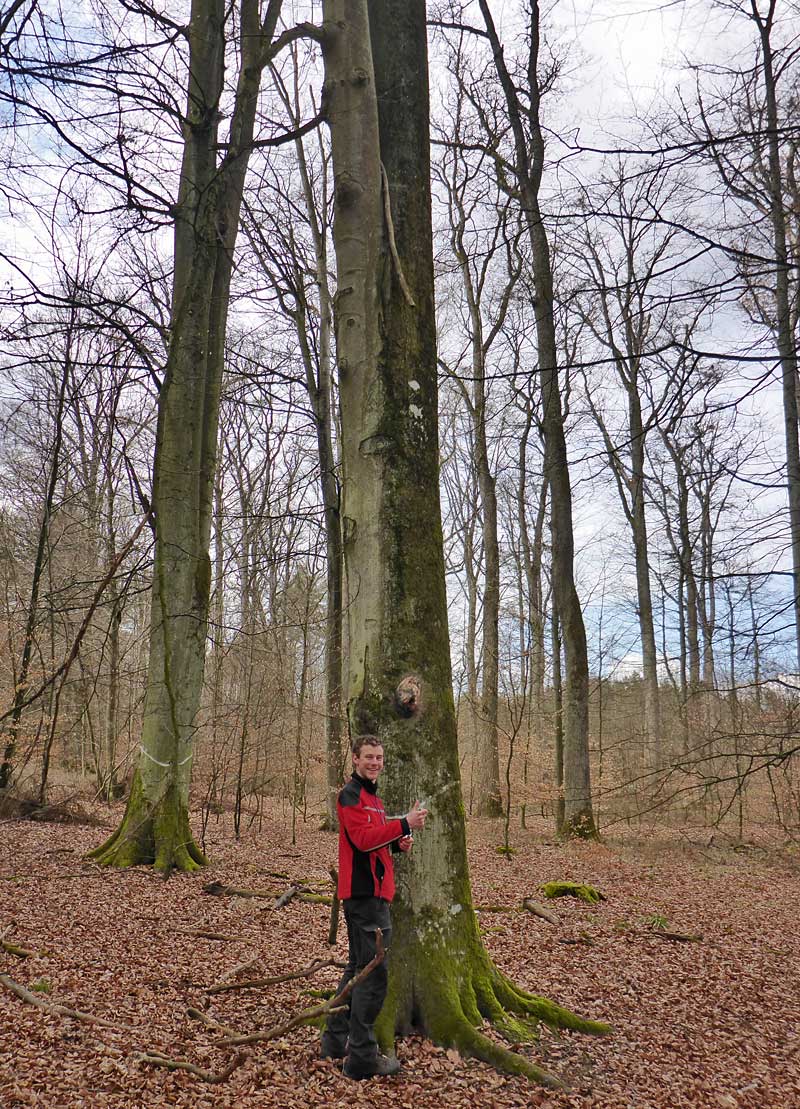
Fig. 1: Niclas Aleff in well-marked Habitat Tree Group.
Since 2010 habitat trees, habitat tree groups (HBG) and small-scale forest reserves have been designated and protected in the Baden-Württemberg state forest, as part of the Habitat Tree and Deadwood Concept (AuT). This concept is part of the state-wide overall forest nature conservation program.
The protection of forest areas for nature conservation inevitably results in a reduction of productive forest land and economic losses. Furthermore, the area covered by these protected HBGs, which accumulate deadwood, lie primarily in production forest areas, which are close to their final harvest, thus influencing work safety. In a joint study by the departments of Forest Nature Conservation and Forest Economy of the FVA, 100 randomly selected HBGs in the Baden-Württemberg state forest were analyzed. Ecological and economic parameters of HBGs and single trees were collected. The position of boundary trees was documented for calculating HBG areas.
Economic consequences result from a variety of factors:
1. Production loss
By conserving certain areas, the standing stock and the continuing increment must be depreciated operationally. The method by Möhring et al. (2006) to calculate this production loss has become the standard operation, in which the annual production loss is calculated in Euros/hectare. In economic terminology, this is called an annuity, which is the annual equivalent to the net present value of a cutting cycle.
This concept of timber production value incorporates operating expenses such as planting and silvicultural measures as well as logging costs. Timber production value is significantly determined by tree species, site class and the amount of natural regeneration. The areal size of the HBGs and the exact tree species composition are crucial to calculating the value.
2. Increased administrative costs
Selecting and marking of HBGs are additional duties that must be included into the daily routine of foresters. Results from other related studies lead us to assume that considering conservation issues in forestry increase administrative costs.
3. Increased operational costs in surrounding forests due to work safety
The enrichment of deadwood, which still causes accidents in today’s forestry, leads to conflicts between work safety and conservation. Therefore, work safety must be considered when assessing the concept of enriching deadwood. Moreover, work safety may lead to additional expenses in education, administration and operational costs.
Composition and size of HBG
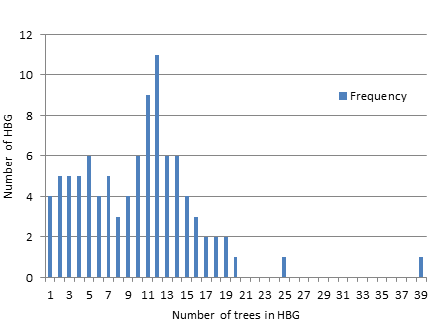
Fig. 2: Distribution of tree numbers per HBG.
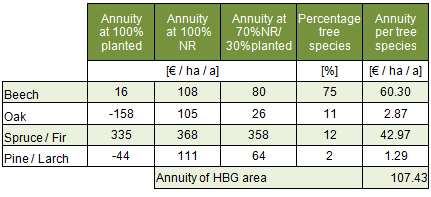
Table 1: Annuities of tree species and the average HBGs.
An HBG supposedly consists of one or several habitat trees, which are surrounded by additional trees, ergo in sum approximately 15 trees. However, our results show that the target value of approximately 15 trees per HBG has not been achieved yet. The actual average number of trees per HBG is near 11. The current distribution of tree numbers per HBG is shown in Figure 2.
Using the data that we collected, we calculated area under crown cover using a convex polygon at the root collar, where the crown cover radius of the boundary trees was added. This resulted in an average HBG area of 582m².
Costs of production loss
To calculate production loss, the amount of natural regeneration (NR) was presumed to be 70%. This together with tree species composition, determined by the area in proportion to its crown cover, resulted in a calculated annuity value of €107.43 per hectare for the HBG areas. Assuming 600m2/HBG, this is approximately €6/year/HBG, which can no longer be generated from forestry production. Extrapolated from the target value of 2300 hectares of HBG-area, production loss adds up to a consistent €250,000 per year. As stated previously, this is only a small proportion of the effective total costs.
Work Safety and Work Coordination
Aside from data collection on site, three experts were interviewed on how the AuT-Concept should be evaluated from the perspective of work safety. Therewith it became clear that the topic of work safety had already been playing a key role during the design of the AuT and that this led to concentrating one HBG per three hectares. This assumes that an HBG takes on an accumulating function. Outside of the HBG minimizing dead wood can be targeted, while these structures occur more inside the HBGs. At the same time, we previously stated that this effect only applies if the groups can be identified clearly and from a distance.
This assumption was contradicted because 14% of the HBGs could not be found by our employees, despite having access to GPS-data. There could be various causes that are responsible for this, but faded markings certainly played a key role (Fig. 3). Unrecognizable HBGs are neither protected from silvicultural measures nor are there any markings that warn even of the existence of an HBG.
The investigation of the distances of the HBG to the skid trails shows that only 9% of the HBG have contact with the skid trails, but it is impossible to differentiate the locations of skid trails from HBGs. In 40% of the cases skid trails have contact to HBGs; another 32% the skid trails lie closer than a tree-length distance from it (see Figure 4). Thus, we assume that harvesting will take more time and the risks will be higher when there are increasing amounts of dead wood in the HBGs.
In summary, the production loss of the HBG is noticeable and should be considered together with the other costs of the AuT in resource planning. The designation of the HBGs has positive effects on work safety, but it is dependent on good visibility of the markings. Concentrating on a few major HBGs is desirable not only in terms of work safety, but also for cost reasons as well.
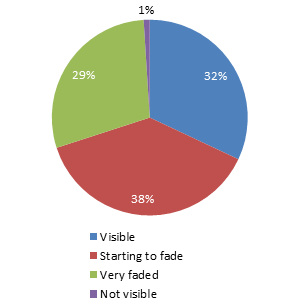
Fig. 3: State of HBG markings.
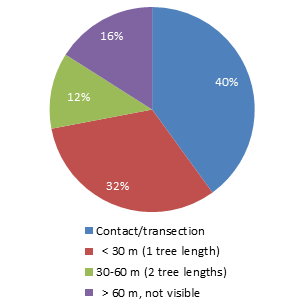
Fig. 4: HBGs and skid trails.


